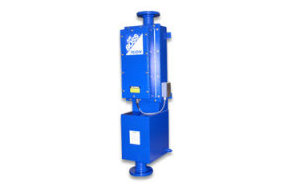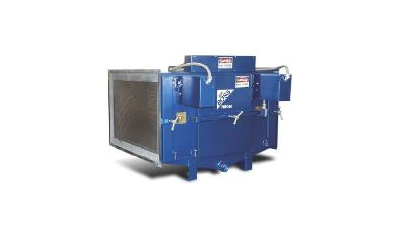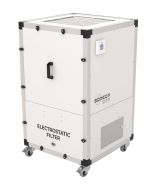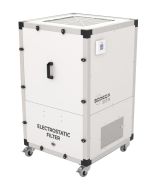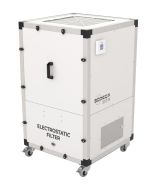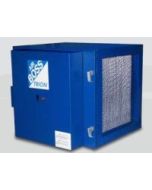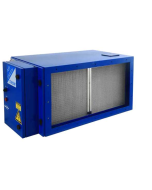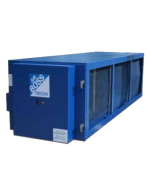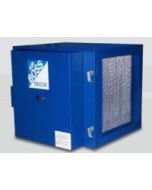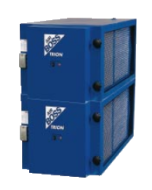Oil Mist Removal, Capture and Reuse

Oil Mist Removal, Capture and Reuse - Background
In industries where material is machined and cut, it is typical that specialised cutting fluids are used to cool the cutting heads and prolong their edge and life. Cutting fluids also wash waste material away.
The feeding of oil onto the cutting operation inevitably causes spray and can cause mists to develop, particularly if there is temperature is higher than ambient. Whist it is usual for oil mist and spray to be largely contained in custom build machine enclosures and recycled, some mist can escape, particularly when inspection hatches are opened for checking, changing work pieces or making adjustments. Cutting fluids are normally collected and filtered to extract dust and swarf and then recycled.
The problem is that some of the mists can escape and become 'fugitive' mist when they enter the wider workplace, giving rise to a number of issues under COSHH and health and safety law.
Lubrication and cutting fluids are well-known to give rise to several health issues for those working with them, where these fluids in either liquid or mist form can enter the body via skin contact or by inhalation. As well as being hazardous to health, oil mist is can coat floors, walls and equipment with a layer of oil, making the work place difficult to work in and dangerous. Fugitive oil mists also increase risk of fire and in some cases, explosion.
Problems with oil mist in the workplace? Browse our range of the Trion T series electrostatic oil mist removal units
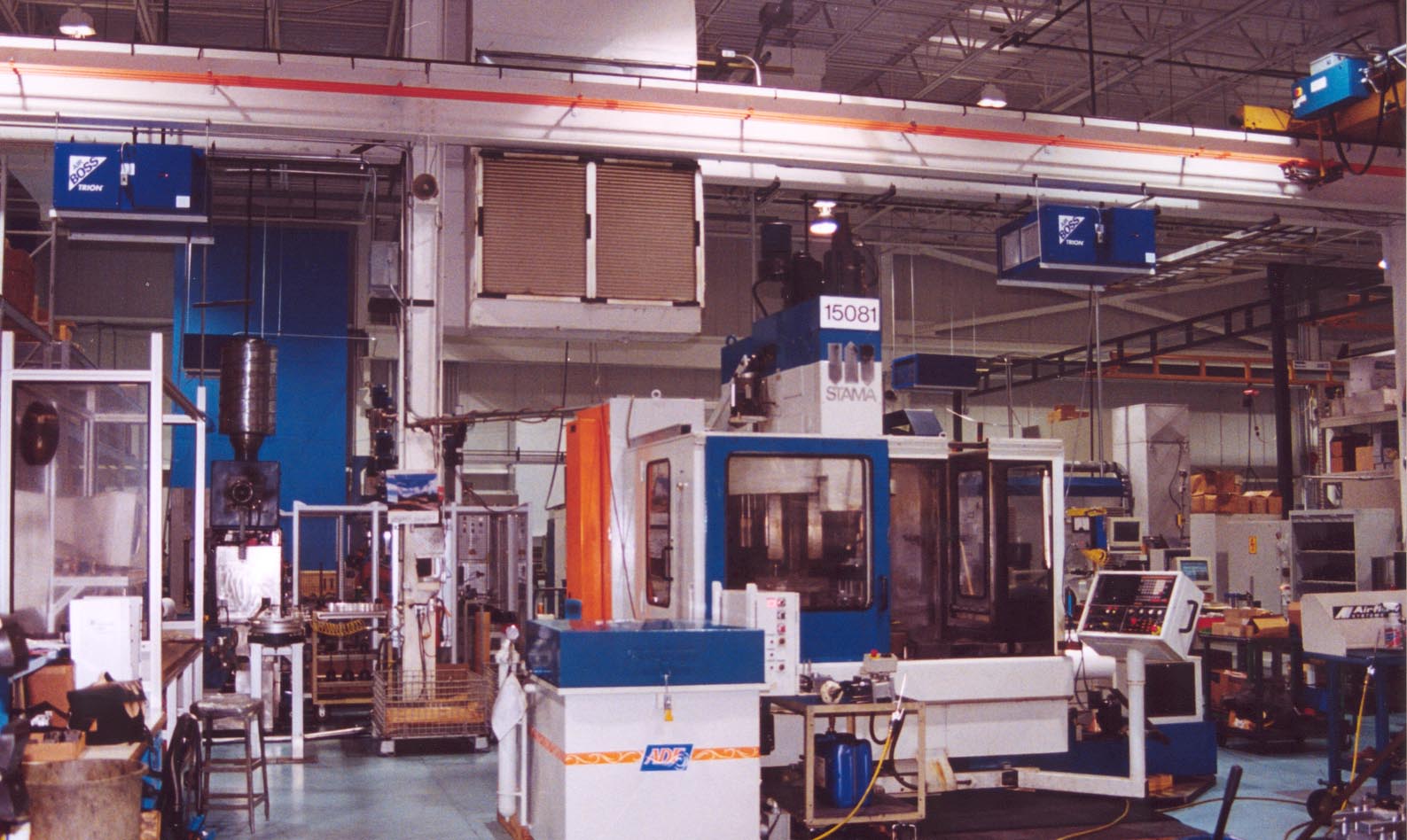
Oil Mist Removal system for fugitive oil mists. In the machine shop fugitive oil mists can be the issue and for this the Trion T series units are ideal
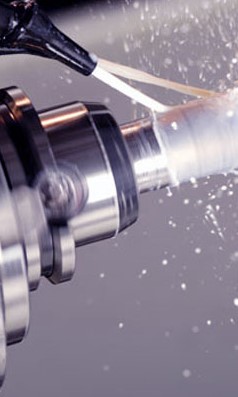
In machine enclosures oil mist is created by cutting fluids and moving machinery. Oil mist removal and reuse can be easily achieved in this type of application using Trion VOMP and Mini ME electrostatic mist collectors
Machine operators rely on windows in the machine enclosures to check on machining progress, however the creation of oil mists within the enclosure can coat the window, obscuring vision to the machine inside the enclosure. Also oil mist inside the enclosure can coat various adjustment wheels, knobs, work clamps and electrical contracts with an oil film. For these general reasons and countless other reasons unique to individual machines, oil mist removal inside machine enclosures is very desirable, if not essential.
Oil mist also arises when lubrication oil from a machine, large gearbox or engine mixes with air in either the machines' air space or oil reservoir air space. Invariably these air spaces are open to ambient pressure via breathers, and oil mist expelled from breathers can coat the outside of the machine and other equipment and add to fugitive oil mist in the wider air space. This type of application found in large stationary engines, turbines and in marine environments are ideally suited to electrostatic oil mist removal.
With some mechanical processes oil mist is purposely created and used as the lubrication mechanism as a jetted stream. This type of system relies on effective capture of over-spray oil and return to the lubricant reservoir. Oil mist removal is needed as part of that lubrication cycle.
Oil Mist Removal, Capture and Reuse - Applications
The most easily recognised applications for oil mist problems are in the metalworking industries, and include those processes in which metals and milled, turned, drilled, ground, punched and machined. Oil mist extraction is also required in power generation and large stationary engines and turbines, where mist unchecked can come from gearbox and crankcase breathers, gland vents and lubrication oil tank vents.
Less obvious applications where oil mist removal is needed include some food processes, rendering, plastics and synthetic fabric manufacture. As well as fugitive oil mist and smoke and mist within enclosures, applications for oil mist removal, also arise where oil aerosols are captured within a local extract ventilation, LEV system.
Oil Mist Removal, Capture and Reuse - Approach
Puravent have for several years supplied Trion industrial air cleaners. The Trion range of electrostatic industrial air cleaners, are probably the best available of their type, and their products are particularly suited as solutions to oil mist removal problems. The approach we recommend is two pronged;
Source oil mist. We recommend that suitable electrostatic oil mist collectors are fitted to the enclosed sources of mist e.g., lubricant and cutting fluid reservoirs, crank cases and enclosures. The collected fluid from these electrostatic oil mist collectors is invariably good for reuse and is therefore normally drained into the relevant sump or reservoir. For this type of operation Trion have three principal models which can cover the vast majority of applications in their standard format. These are;
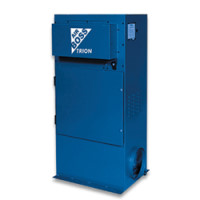
Trion VOMP 600 oil mist eliminator 600 - 1400 m3/hr Includes fan
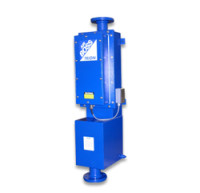
Trion Imp 38 comes in 3 sizes; Imp38 / 150 Upto 250 M3/hr Imp38 / 300 Upto 510 M3/hr Imp38 / 600 Upto 1020 M3/hr, No fan; relies on pre-existing air flow through pipe
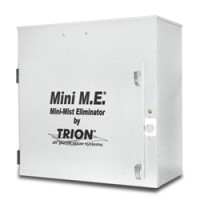
Trion Mini ME1000 M³/Hr Includes fan
These units are all based on electrostatic separation of oil mists from the air. The collected fluid in most cases is free-flowing once collected on the collector cell within the filter and will drain by gravity to a reservoir.
Fugitive oil mist. In most cases oil mist escapes from enclosures when machine maintenance and periodic inspection takes place and that oil mist in the wider airspace presents a workplace health and safety issue for which we recommend the Trion T series electrostatic industrial air cleaners complete with integral fan.
The beauty about these air cleaners is that they combine both electrostatic cells and a fan in a single unit and are easily installed, hung from roof/ceiling structural members where they quietly work away, recirculating the air and catching oil mist on a continuous basis. The captured fluid in most cases readily drains from the collector plates in the unit and can be returned via drain pipework to the reservoir. The models that we generally use for fugitive oil mist are;
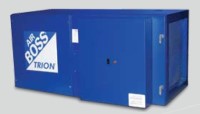
Trion T1300 Upto 2210 M3/Hr Includes fan
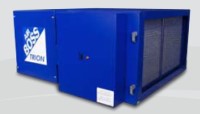
Trion T2600 Upto 4420 M3/Hr Includes fan
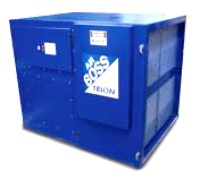
Trion T5200 Upto 8840 m3/hr Includes fan
As an alternative to the industrial air cleaners complete with fan, the T series electrostatic only units can be installed as part of a ducted system with suitably angled transformer ducts, and a separate fan unit.
The key thing is to ensure that the air flow through the unit is not higher than its recommended flow and that the angle of the transformer ducts are sufficiently shallow to ensure that the process air enters and exits the collector cell evenly, thus avoiding channelling. Because electrostatic cells have virtually no pressure resistance to spread the incoming air over the face area of the cell it is important that the ducting is designed to do this spreading effectively.
Under specification of systems and badly designed duct entry and exits can reduce the over all efficiency of the unit. The models that we generally recommend for oil mist removal and connection to ducting are;
Trion T10011360 - 2210 M3/Hr
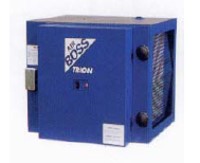
Trion T2002 2700 to 4420 M3/Hr
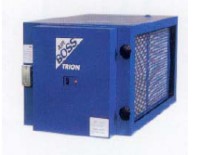
Trion T4002 5400 to 8840 m3/hr
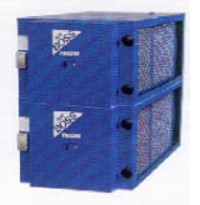
Trion T6002 8100 to 13260 m3/hr
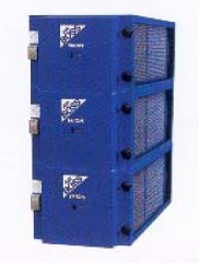
There are many other sizes, however, all the T series electrostatic oil mist removal units are based on multiples of the same the T1001 insides and electrics, and they can be arranged to suit a wide variety of air flows and applications. For help with any oil mist removal problem, please get in touch with us.
Oil Smoke
Oil smokes are a slightly different problem to oil mist. They are produced from hot processes and the challenges of capturing oil smoke are similar to that of oil mist, however the configuration and operation of the electrostatic filter will be different to allow for cell cleaning and/or auto-wash cycles.
Conclusion
Oil mist is a work place issue that has many problematical symptoms, however it does have a cure. Our usual solution is to specify and supply Trion industrial electrostatic air cleaners because not only are they generally well engineered and built, they have a superb track record in these type of oil mist applications.
Guidelines and Regulations Concerning Oil Mist and Its Control (click title to activate link)

